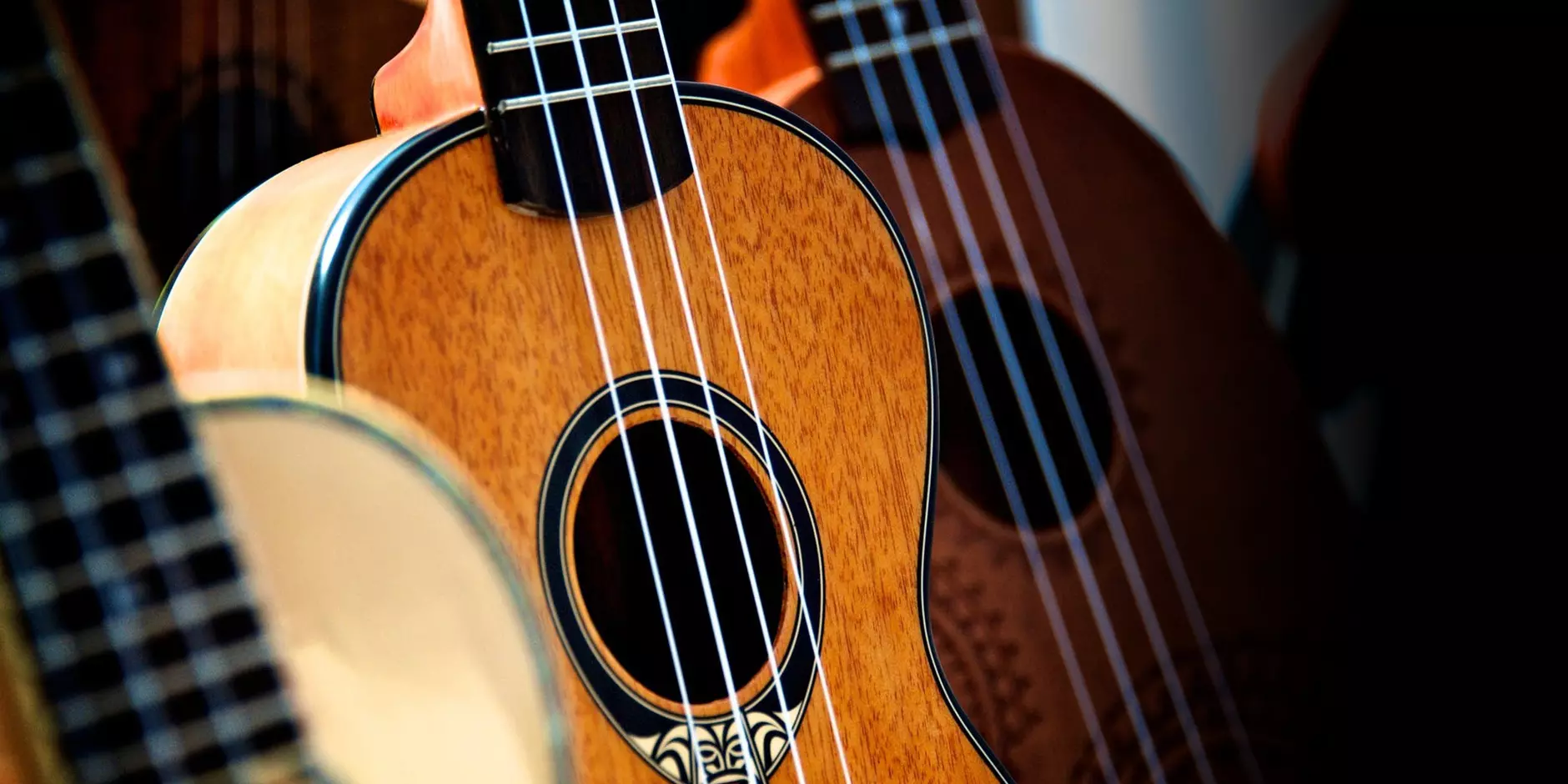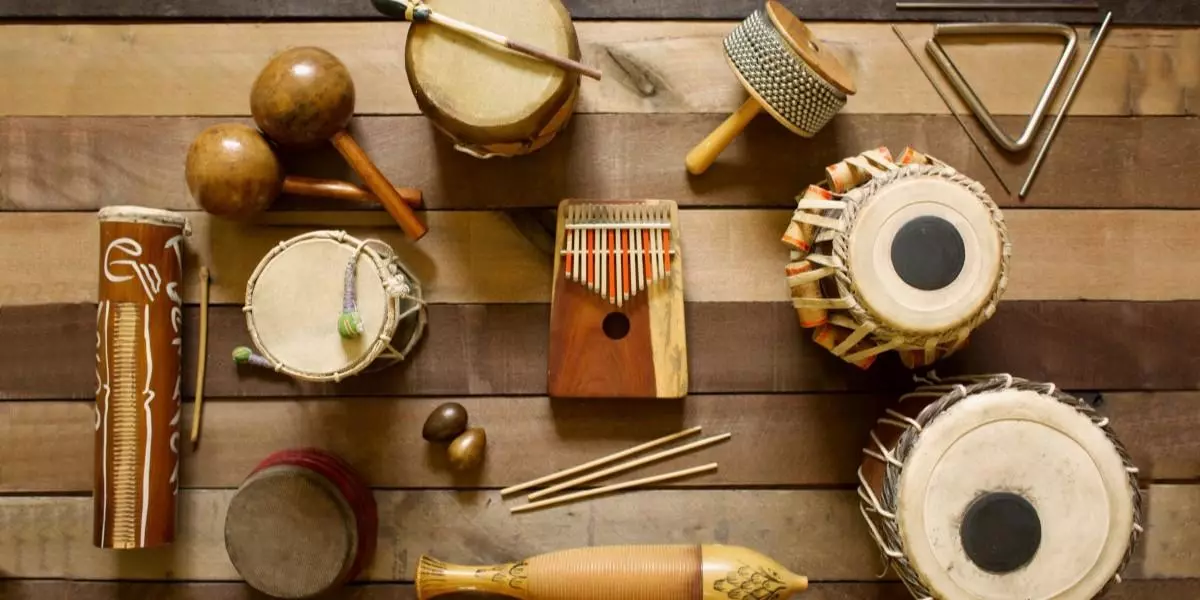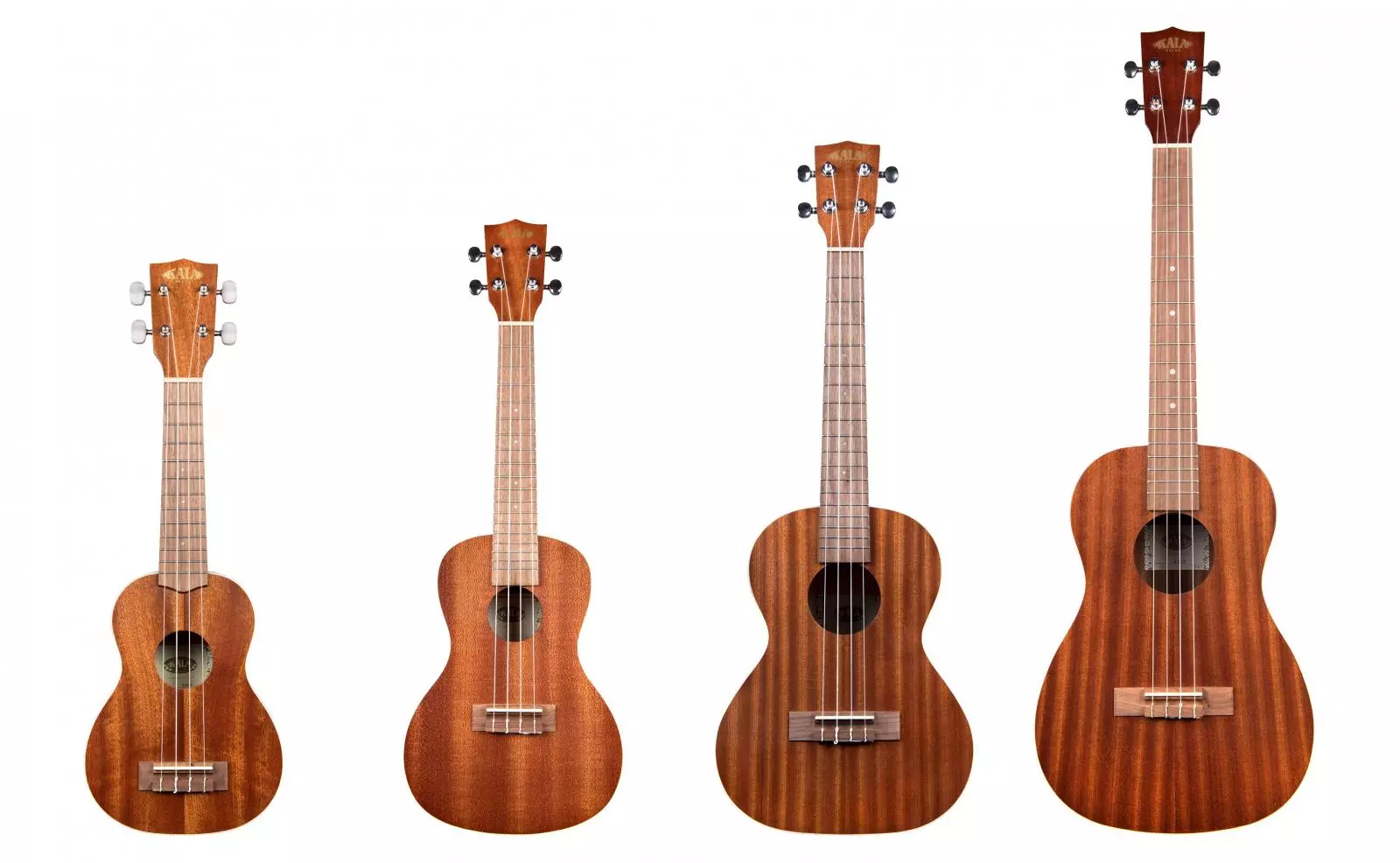The Undisputed Champion: The Ukulele

As a life long fan of professional wrestling, I can appreciate a good underdog story more than most. Picture it: a hulking behemoth stands confidently in the ring, muscles exploding, clad inexplicably in what is essentially underpants. Across the squared circle stands a skinny kid, perhaps a foot shorter than their opponent and maybe half the weight. The bell rings and they lock up. In exchange after exchange, the larger grappler punches, kicks, slams and pummels with impunity. But even after all this punishment and ridicule, the smaller competitor just won’t stay down.
And it is in this underdog spirit that we discuss the humble ukulele, the instrument that just won’t stay down no matter how many finishing manuevers one performs. Once looked upon as a bit of a novelty, the ukulele has been riding a wave of popularity for nearly a decade. In this blog, we will discuss why that might be, and we’ll also discuss some basics to help you choose wisely when it comes time for you to don the tights and enter the ring.
Cruiserweight or Heavyweight
Often the first thing to consider when choosing your ukulele is the size. There are four general sizes, from smallest to largest: Hornswaggle, Bret Hart, Hulk Hogan, and Andre the Giant. Oh wait...that’s not right. It’s soprano, concert, tenor and baritone. The soprano size, like famed short wrestler Hornswaggle, is small, compact and easy to handle. Due to its unassuming size, the soprano is excellent for beginners, travelers and children. The next size up is the concert size, and like Bret Hart, it is my personal favorite. It has a larger body size and a longer neck (the instrument, not the wrestler), making the frets farther apart. The concert size is perfect for those seeking the deeper, warmer tones that the bigger body size provides, or perhaps those with bigger hands who need more space to fit their fingers between the frets. The next two sizes, tenor and baritone, are generally less common as they begin to stray a bit from the traditional size, tone and vibe of the ukulele. That said, they are bigger still with even longer necks, to the point that the baritone is actually tuned lower than a traditional ukulele; it is tuned the same as the 4 treble strings of a guitar, and while it does make it easier to play along with guitarists, the tone and vibe is fairly far removed from the more standard soprano size. But maybe that is what you want; a super heavyweight ukulele to crush your opponents, not unlike Hulk Hogan fighting Andre the Giant at Wrestlemania 3. Look it up, kids.
Check out soprano, concert, tenor and baritone ukuleles!
Brand Split
Like any other product, ukulele's are available at many different price points and most Long and McQuade locations will carry a wide range of ukuleles, from the entry level to the professional. Excellent examples of entry level instruments include the Denver Duke (available in a myriad of colors) between $43.99 - $46.99 and the Leho ALUS-M for only $64.99, both of which are soprano sized. With that said, if there was a Monday Night Raw of ukulele brands, it would certainly be California based company Kala. They make everything from the entry level KA-15s (an excellent soprano ukulele) to the 3KOA-CG, worthy of a champion at $2025.00 (available to order in-store). With the popularity of ukuleles at the moment, many other brands have thrown their hat in the ring, from industry Heavyweights like Martin and Fender to less ukulele-centric brands like Gretsch and Epiphone. In fact, one of this writer’s favorite ukuleles is the Epiphone Hummingbird Ukulele; it is based on the legendary Gibson Hummingbird guitar, but it is shrunk down to the scale of a ukulele. It even has the iconic Hummingbird pickguard design and an electronics (so you can plug it into an amp) to boot. It is a very cool item for $289.
Check out the Denver Duke here, Leho ALUS-M here, Kala KA-15s here and the Epiphone Hummingbird Ukulele here!
If You Smell What I’m Cooking
The popularity of certain instruments, just like pro wrestling, goes in waves. It goes without saying that up until (but not excluding) the turn of the 20th century, orchestral instruments were the norm, with folk instruments (banjo’s, mandolins and others) being a close second in popularity. While the guitar seems ubiquitous now, the guitar as we know it didn’t really come into it’s own until the 1930’s and certainly not into focus until the 50’s and 60’s. For the past ten years or so the ukulele has been as popular as the WWE’s much vaunted Attitude Era of the late 90’s; everyone you know is into it and it is the hippest thing going. If I were to speculate as to the reason why the ukulele has enjoyed such a resurgence and has maintained such popularity, I would cite three main factors: accessibility, affordability and the fact that it is, frankly, adorable (let’s call them the three A’s). The first A, accessibility, may very well be the most important; the ukulele is a very easy instrument to pick up and play. It’s not as big and cumbersome as a guitar (and has less strings, making is easier to make chords), not as daunting as a cello or a violin and not as intimidating as a piano. Of course, that is not to say that it is not a legitimate instrument worthy of your study. If you want to check out some true masters of the instrument, I highly recommend checking out Jake Shimabukuro’s work, or even the ukulele solo at the end of the Beatles 1995 single “Free as a Bird”, composed and performed by none other than George Harrison himself.
The second A, affordibilty, is pretty self explanatory: being a fairly simple instrument without a lot of moving parts and such, ukuleles can be produced for relatively low cost. This is of course excellent news for parents who want an inexpensive instrument to get their child’s (or their own) foot in the door without investing a lot of capital. But not just parents; anyone who is looking for an excellent instrument for a great price should consider the ukulele, where even professional quality instruments can be just a few hundred dollars.
The third A, the fact that they are adorable, should not be discounted! These days, ukuleles are available in every conceivable iteration, including but limited to ukuleles shaped like happy faces and pineapples, ukuleles that are made of clear plastic that are also waterproof, and even ukulele bass guitars. Yes, that’s right. At the end of the day, it is this writer’s opinion that playing music should be, above all else, fun and the ukulele in all it’s variations makes it very easy to keep it that way.
Check out the Kala Ukadelic Tie Dye Soprano Ukelele here, Kala Watermelon Mahogany Ukulele here and the Mahalo U-Smile Soprano Ukulele here!
Let Me Tell You Something, Brother…
You may be shocked to read that this isn’t the first article I’ve written for Long and McQuade. Crazy, I know. In fact, this isn’t even the only ukulele article I’ve written. I think it is that last fact that really illustrates the enduring popularity of the humble ukulele. Of all the instruments out there, it is interesting that the ukulele has the eye of the tiger and rose up the challenge of it’s rivals. The ukulele is fun, cute, cheap and accessible, and that’s the bottom like ‘cuz Ian James said so. And if you aren’t down with that, I got two words for ya: LONG & MCQUADE.
Well, what did you think I was going to say?!?









